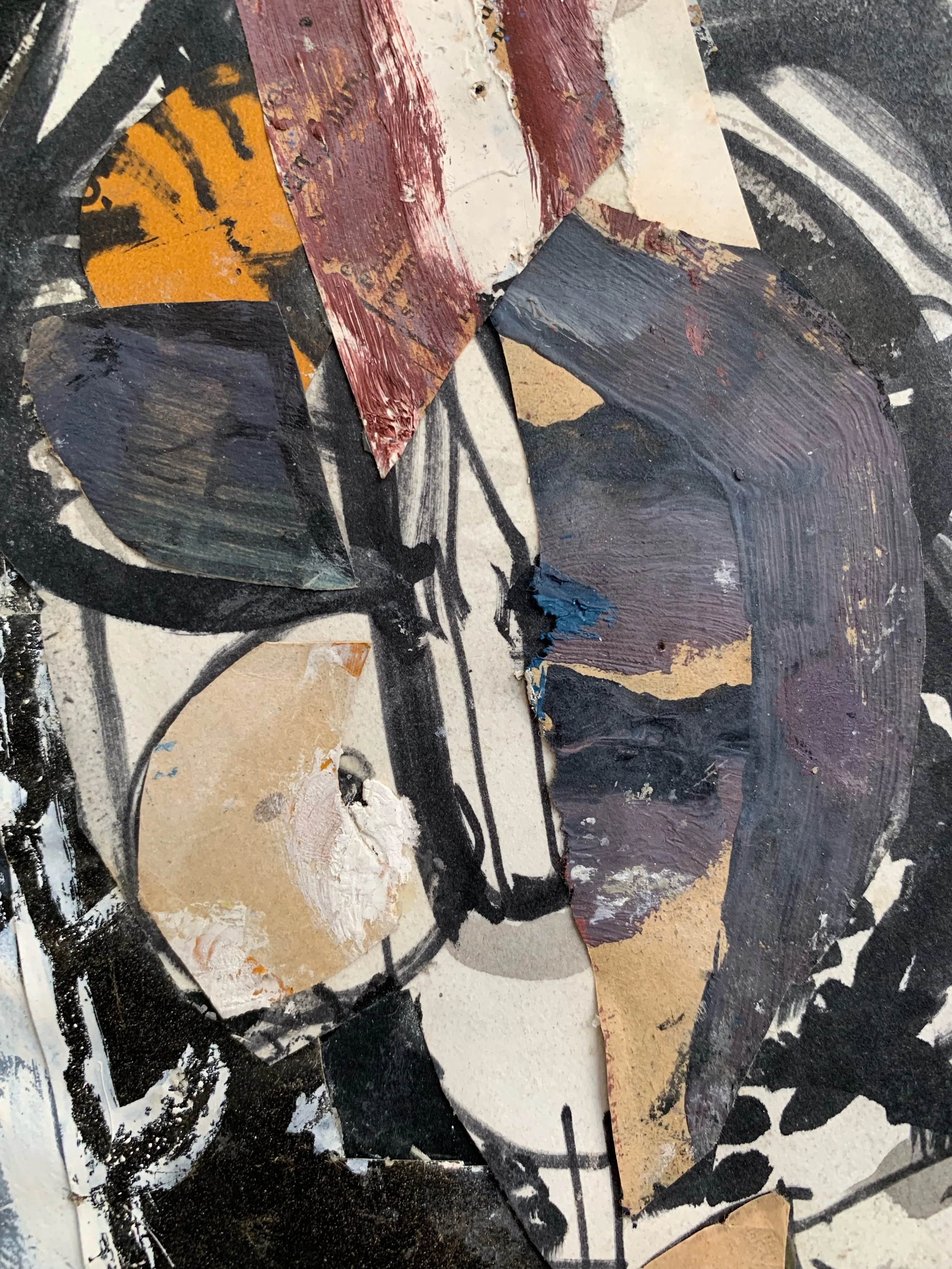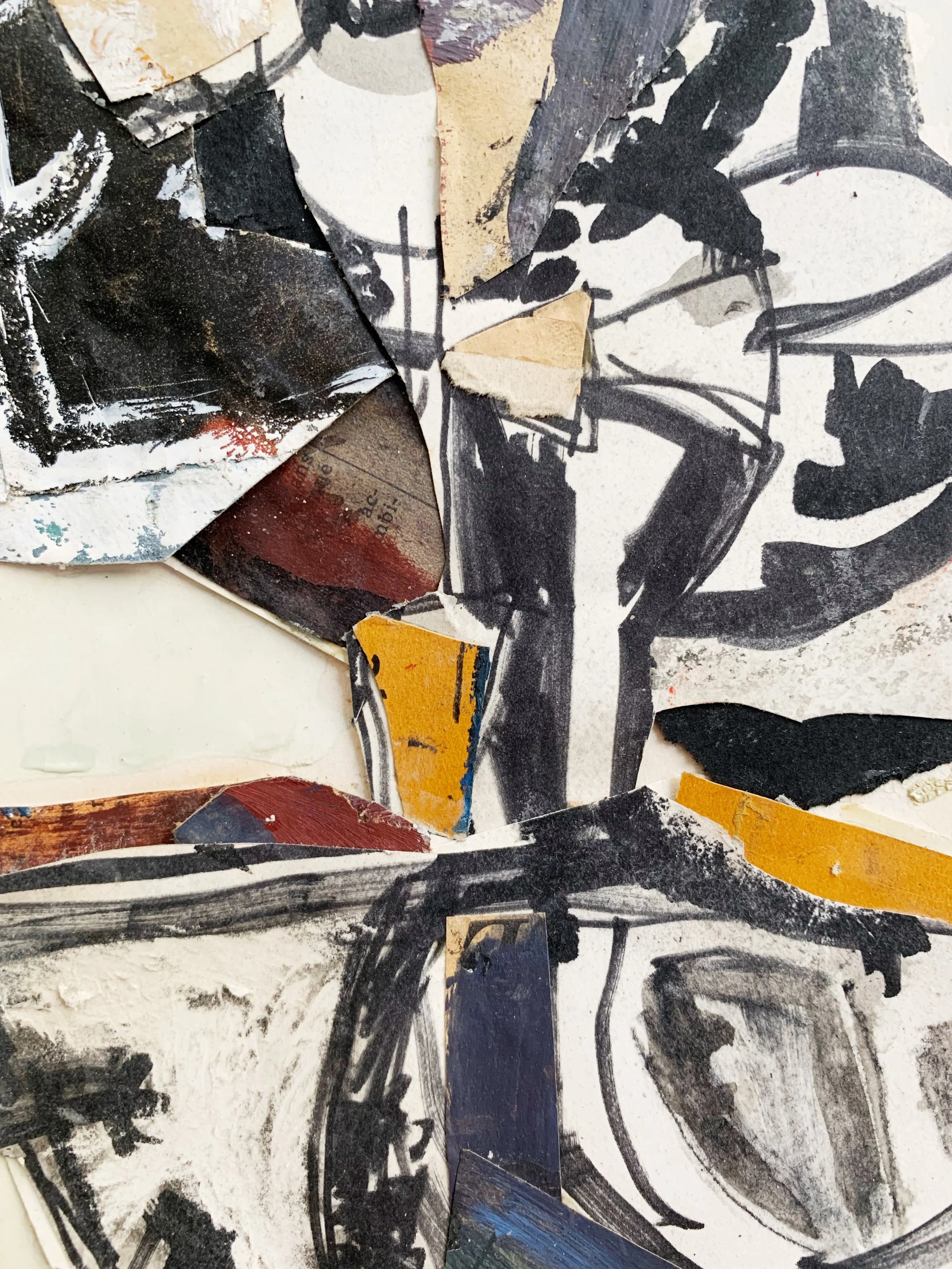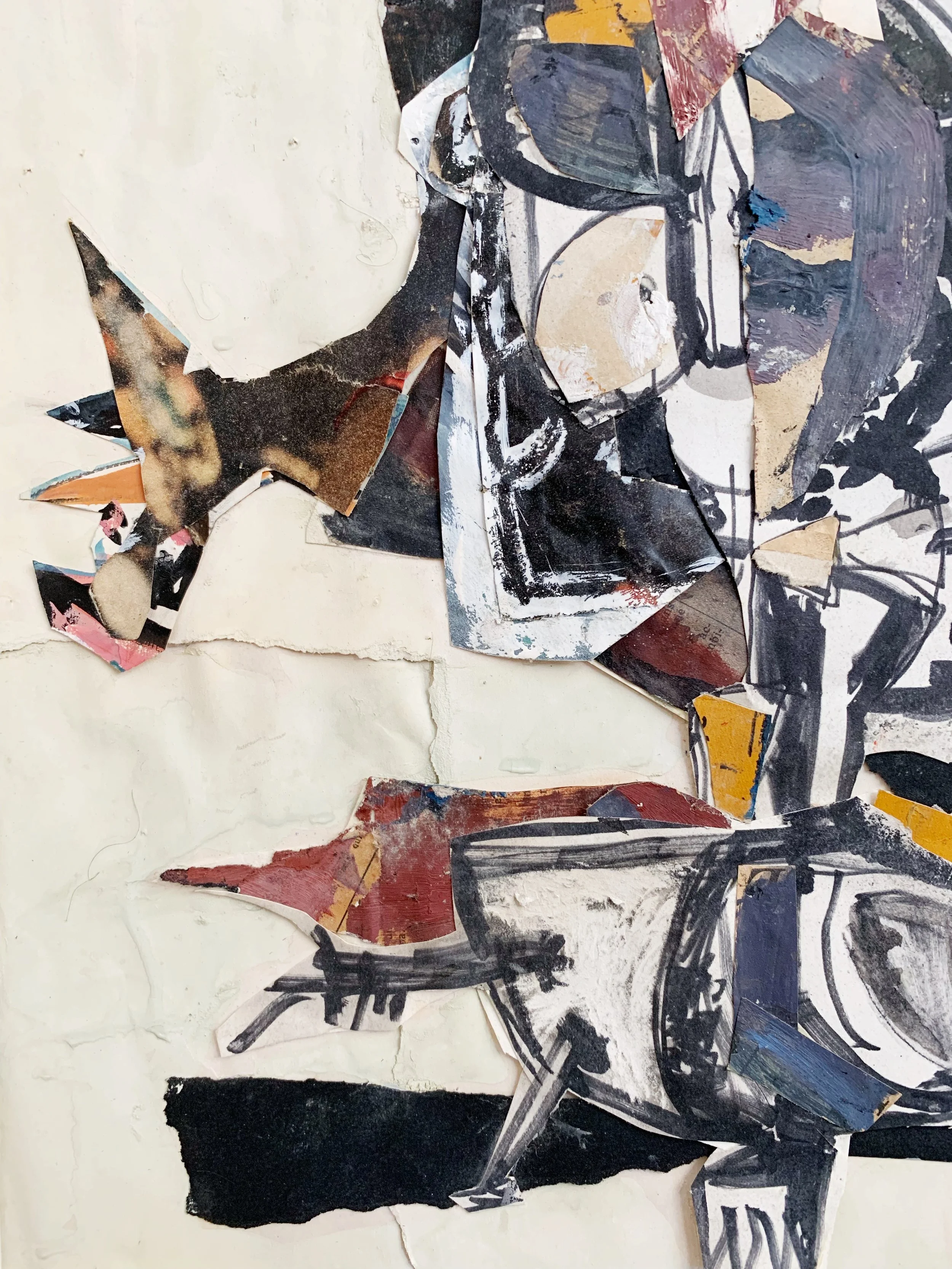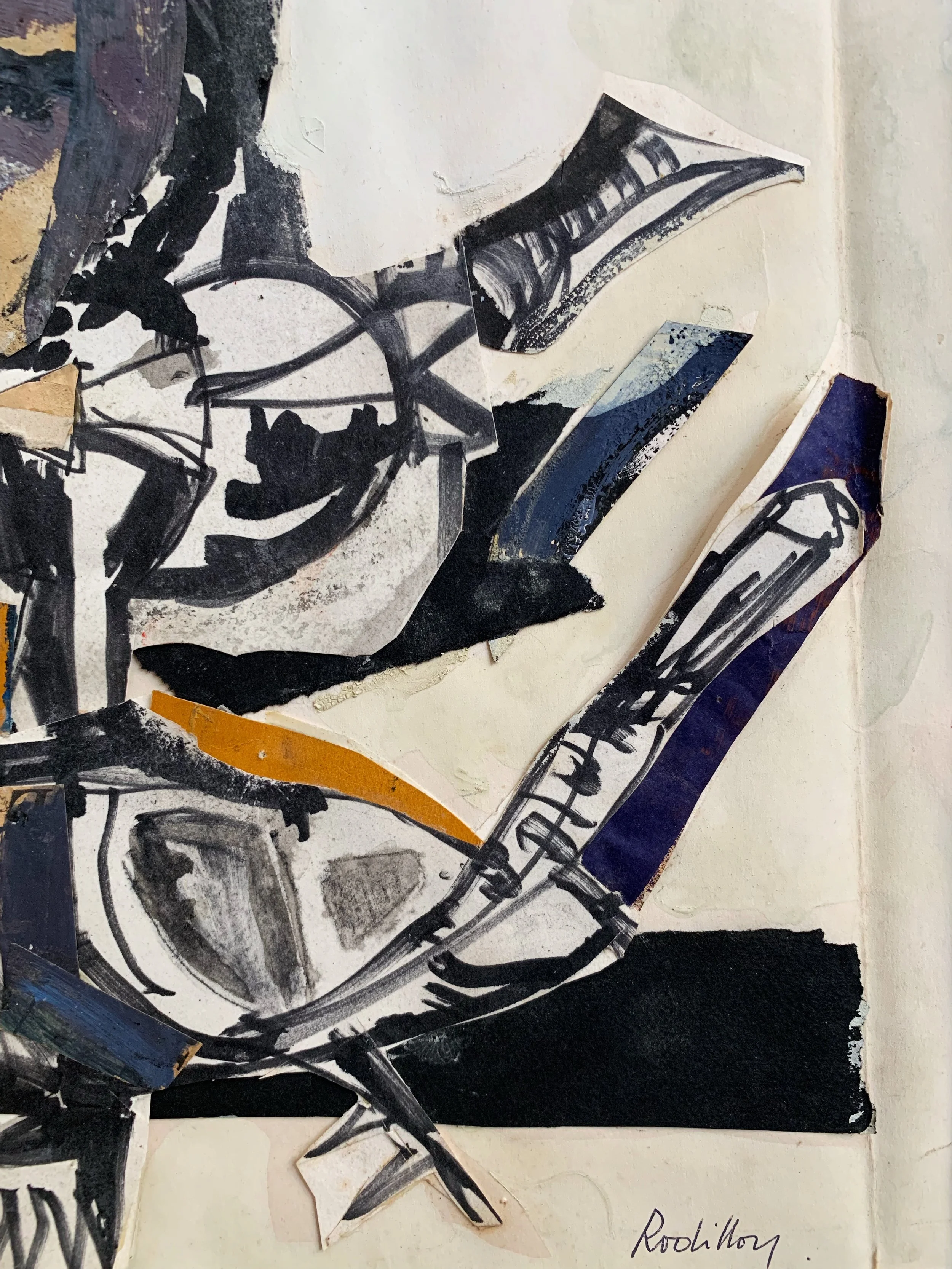Suzanne RODILLON (1916-1988)





Suzanne RODILLON (1916-1988)
Composition zoomorphe, circa 1955
Collage de papiers gouachés déchirés sur papier
Signé “Rodillon” en bas à droite
47 x 35 cm
Provenance : Hôtel Drouot, Cornette de Saint-Cyr, vente d’atelier du 20 octobre 1991, lot 145.
Trace de pliure à droite
-
Zoomorphic composition, circa 1955
Collage of torn gouache paper on paper
Signed "Rodillon" lower right
18,5 x 13,7 inch
Provenance: Hôtel Drouot, Cornette de Saint-Cyr, studio sale of October 20, 1991, lot 145.
Trace of fold on the right
Née en 1916, Suzanne Rodillon, beauté intimidante et excentrique (ill.1), évolue dans le milieu artistique parisien des années 1950. Ses contemporains la décrivent comme une femme fantasque et extravagante, « forte en gueule, forte en rire » *. Elle est proche des surréalistes puis fréquente les fondateurs du groupe CoBrA parmi lesquels le danois Asger Jorn. Ce mouvement pictural d’après-guerre naît à Paris en 1948 en réaction à la querelle opposant l’abstraction et la figuration. Les artistes qui le composent désirent produire un art affranchi des normes et des conventions occidentales en s’inspirant de formes artistiques issues de cultures primitives et exotiques (totems, calligraphie orientale, art préhistorique et médiéval.
Dès sa première exposition personnelle en 1956, le travail de Suzanne Rodillon est reconnu et loué par la critique. L’écrivain et critique d’art Alain Jouffroy évoque son œuvre en ces termes flatteurs : “ce travail me semble un des plus curieux exemples de recherche personnelle auquel nous assistons en ce moment à Paris”. À partir de 1958, se succèderont une série d’expositions collectives prestigieuses, au Japon avec Roberto Matta et Max Ernst, en France, en Italie et en Angleterre. Ses œuvres originales et énigmatiques suscitent l’enthousiasme tant du public que d’amateurs éclairés (Peggy Guggenheim) et de poètes (Jean Paulhan et Jacques Prévert) qui ne cachent pas leur admiration pour l’artiste.
Suzanne Rodillon met en place un langage plastique singulier privilégiant l’expression sans établir, à ses débuts, de frontière tranchée entre l’abstraction et la figuration et que l’on qualifiera parfois d’expressionnisme abstrait. L’artiste s’affranchit de tout formalisme stylistique, allant jusqu’à introduire du marc de café à la surface du papier qu’elle a au préalable entaillé de façon à ce que d’aucuns y voient une interprétation du Bœuf écorché de Rembrandt (1606-1669).
L’art étrange et mystérieux de Suzanne Rodillon se nourrit de cultures africaines et océaniennes qu’elle a approchées de près. Elle met ainsi en place une écriture, forte et personnelle, évoquant tantôt des sujets anthropomorphes (ill.2), tantôt un bestiaire mythique, voire primitif comme c’est le cas du collage de papiers gouachés que nous proposons où l’on devine entre autres deux animaux qui s’apparentent à des oiseaux. L’artiste compose ici un joyeux bestiaire fantastique dans une gamme de couleurs qu’on lui connait par ailleurs (ill.3).
Cette œuvre des années 1950-60 s’inscrit dans une période de création intense qui durera une dizaine d’années avant que, pour des raisons personnelles et familiales, l’artiste pose définitivement ses pinceaux en 1967 et retourne ses œuvres contre les murs de son atelier qu’elle fermera pour ne plus jamais y retourner.
* Orlando de Rudder
Principales expositions
Suzanne Rodillon, Milan, Galleria del Naviglio, avril 1960
Paintings and drawings by Suzanne Rodillon, Londres, Drian Galleries, février 1960 (article de la Revue XXe siècle par Edouard Jaguer à la bibliothèque Kandinsky)
Bibliographie choisie
Edouard Jaguer, Suzanne Rodillon, Milan, Galleria del Naviglio, 1960
Edouard Jaguer, Revue XXe siècle n°10, L’écriture plastique, Suzanne Rodillon : ateliers parisiens, p.84, 1958
Born in 1916, Suzanne Rodillon, an intimidating and eccentric beauty (ill.1), evolved in the Parisian artistic milieu of the 1950s. Her contemporaries describe her as a whimsical and extravagant woman, "strong in the mouth, strong in laughter" *. She was close to the surrealists and then frequented the founders of the CoBrA group, including the Danish Asger Jorn. This post-war pictorial movement was born in Paris in 1948 in reaction to the quarrel between abstraction and figuration. The artists who were part of this movement wanted to produce an art that was free of Western norms and conventions by drawing inspiration from artistic forms from primitive and exotic cultures (totems, oriental calligraphy, prehistoric and medieval art.
From her first solo exhibition in 1956, Suzanne Rodillon's work was recognized and praised by the critics. The writer and art critic Alain Jouffroy evoked her work in these flattering terms: "this work seems to me one of the most curious examples of personal research that we are witnessing at this time in Paris". From 1958, a series of prestigious group exhibitions followed, in Japan with Roberto Matta and Max Ernst, in France, Italy and England. His original and enigmatic works arouse the enthusiasm of the public as well as enlightened amateurs (Peggy Guggenheim) and poets (Jean Paulhan and Jacques Prévert) who do not hide their admiration for the artist.
Suzanne Rodillon established a singular plastic language that privileged expression without establishing, at the beginning, a clear-cut border between abstraction and figuration and that was sometimes described as abstract expressionism. The artist frees herself from any stylistic formalism, going so far as to introduce coffee grounds on the surface of the paper, which she has previously notched in such a way that some see it as an interpretation of Rembrandt's Flayed Ox (1606-1669).Suzanne Rodillon's strange and mysterious art is nourished by African and Oceanic cultures that she has approached closely. She thus puts in place a strong and personal writing, evoking sometimes anthropomorphic subjects (ill.2), sometimes a mythical bestiary, even primitive as is the case of the collage of gouache papers that we propose where one guesses, among others, two animals that look like birds. The artist composes here a joyful fantastic bestiary in a range of colors that we know him otherwise (ill.3).
This work from the 1950s and 1960s was part of a period of intense creation that lasted for about ten years before, for personal and family reasons, the artist put down her brushes for good in 1967 and turned her works against the walls of her studio, which she closed and never returned to.
* Cette oeuvre est vendue en l’état, sa nature de bien d’occasion emporte l’acceptation de l’acheteur quant à la possibilité qu’elle puisse comporter des marques d’usage, d’usure, de fragilité, d’ancienneté ou de restauration dues au passage du temps.
